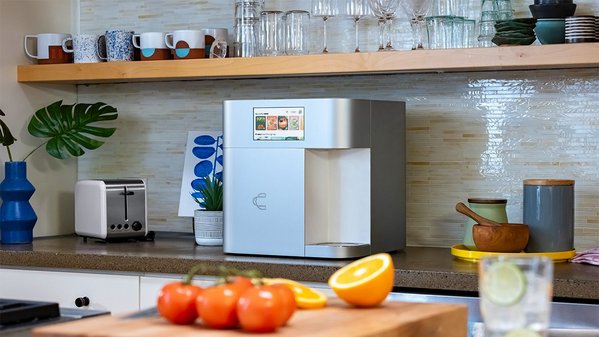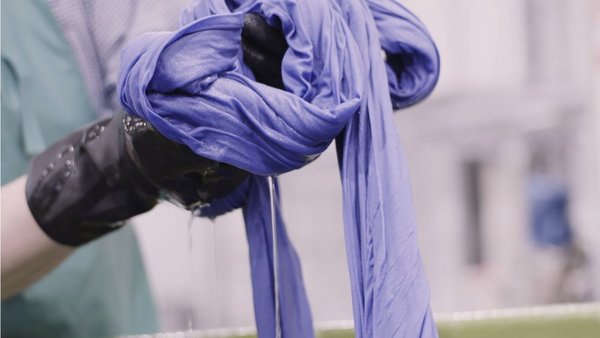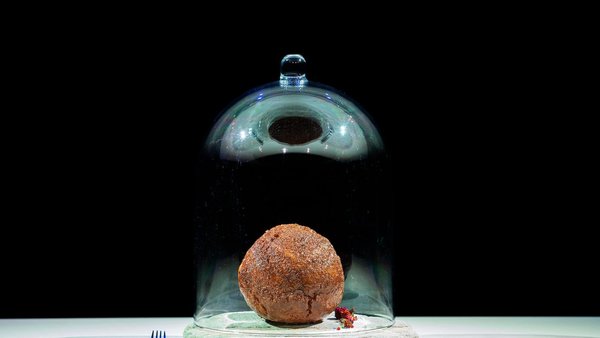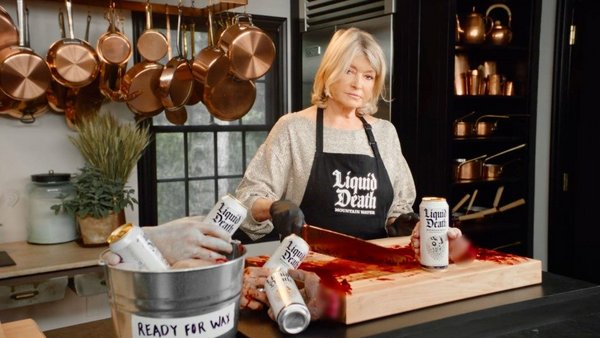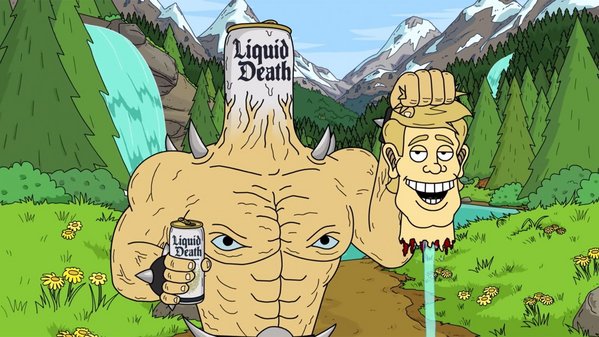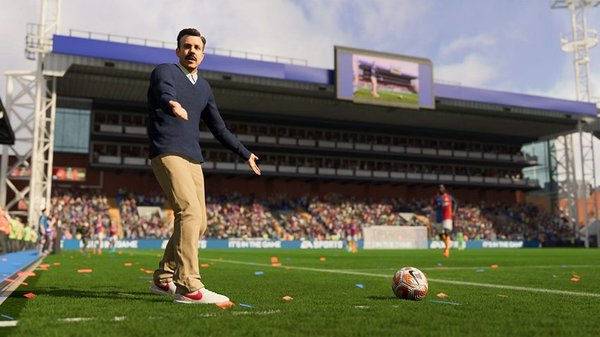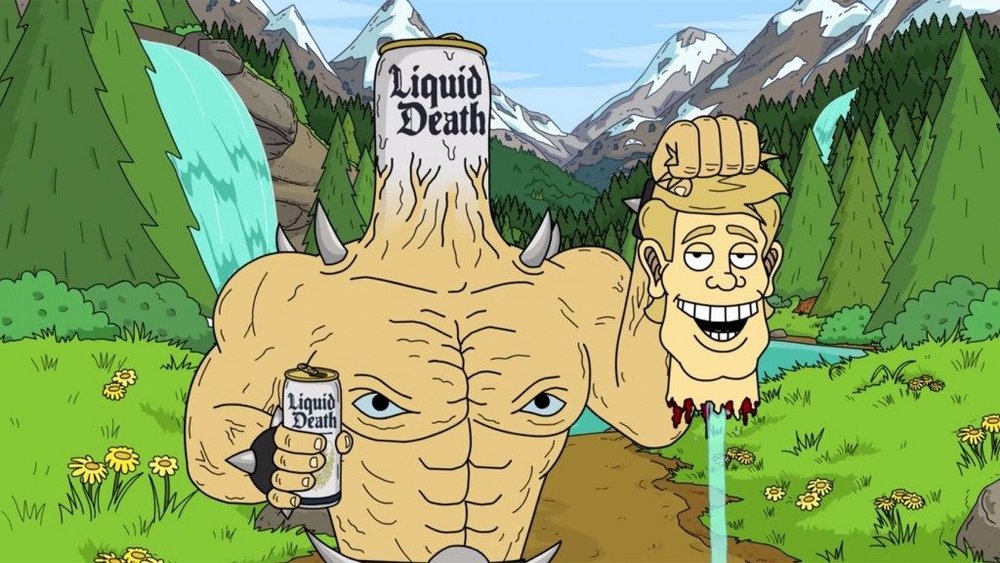
At a glance /
- Liquid Death is disrupting a wholesome category by positioning itself as punk rock, cool and funny
- The brand’s marketing strategy is to create branded entertainment that people want to engage with – a tactic that has resulted in it being the eighth most followed beverage brand on social media
- ‘Why would you want to follow a fucking water brand that just posts photos of their bottles all day?’ says CEO Mike Cessario. ‘If we create actual entertainment and not try to just sell, sell, sell, it will naturally create that fandom for Liquid Death that you can’t even buy with money.’
- To compete with the other water brands that have higher budgets, Liquid Death frequently tries to monetise its marketing by selling exclusive merch and content to recoup costs
A babbling brook, snow-capped mountains set against an unblemished blue sky, maybe even giggling babies. These images, which connote wellbeing and purity, are what you might expect to see in advertising for a water brand.
But what about an axe-wielding musclebound warrior with eyes for nipples and an aluminium can for a head? Or a sentient can that hunts down and kills teenagers. That’s more Liquid Death’s speed. It’s mountain water branded with a flaming skull, sold in 500ml tallboy cans that urge you to ‘murder your thirst’.
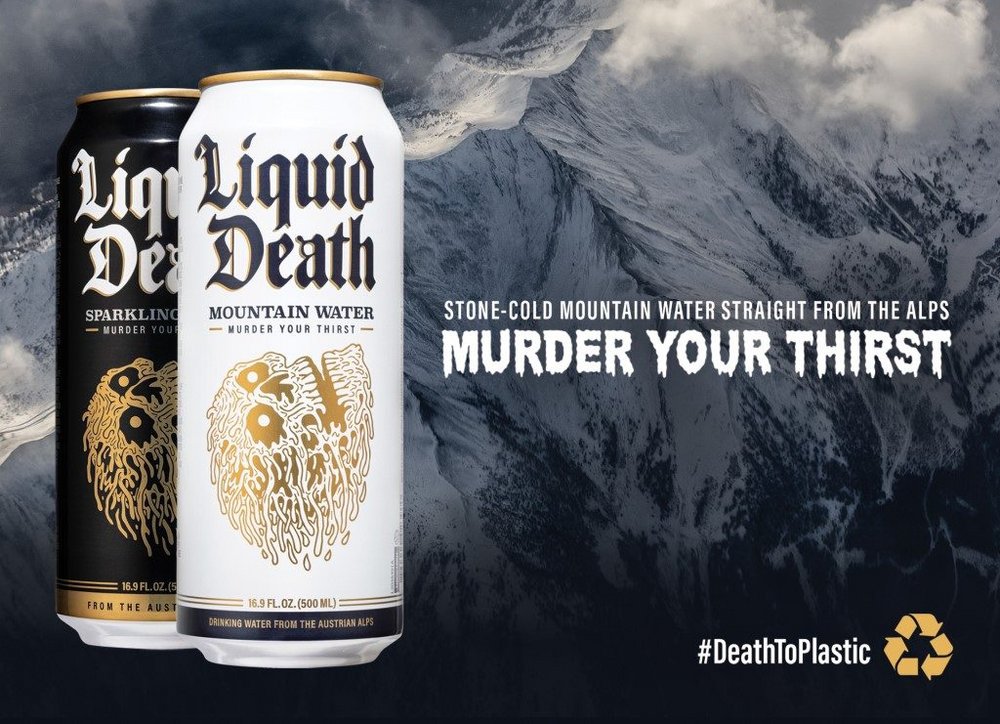
The idea of a premium water brand with a heavy metal aesthetic and the word ‘death’ in its name sounds too ludicrous to work. And yet, Liquid Death claims to be one of the fastest growing non-alcoholic beverage brand of all time. Since CEO Mike Cessario founded the company in 2017 in Santa Monica, California, Liquid Death has become the eighth most followed beverage brand on social media, has amassed nearly $50m in investment funding and is sold in over 16,000 stores across the US.
The company’s success comes from challenging category conventions and transforming a ubiquitous product into a desirable and exciting brand, the origins of which hark back to Mike’s former life as an ad man and spotting an overlooked insight into health marketing.
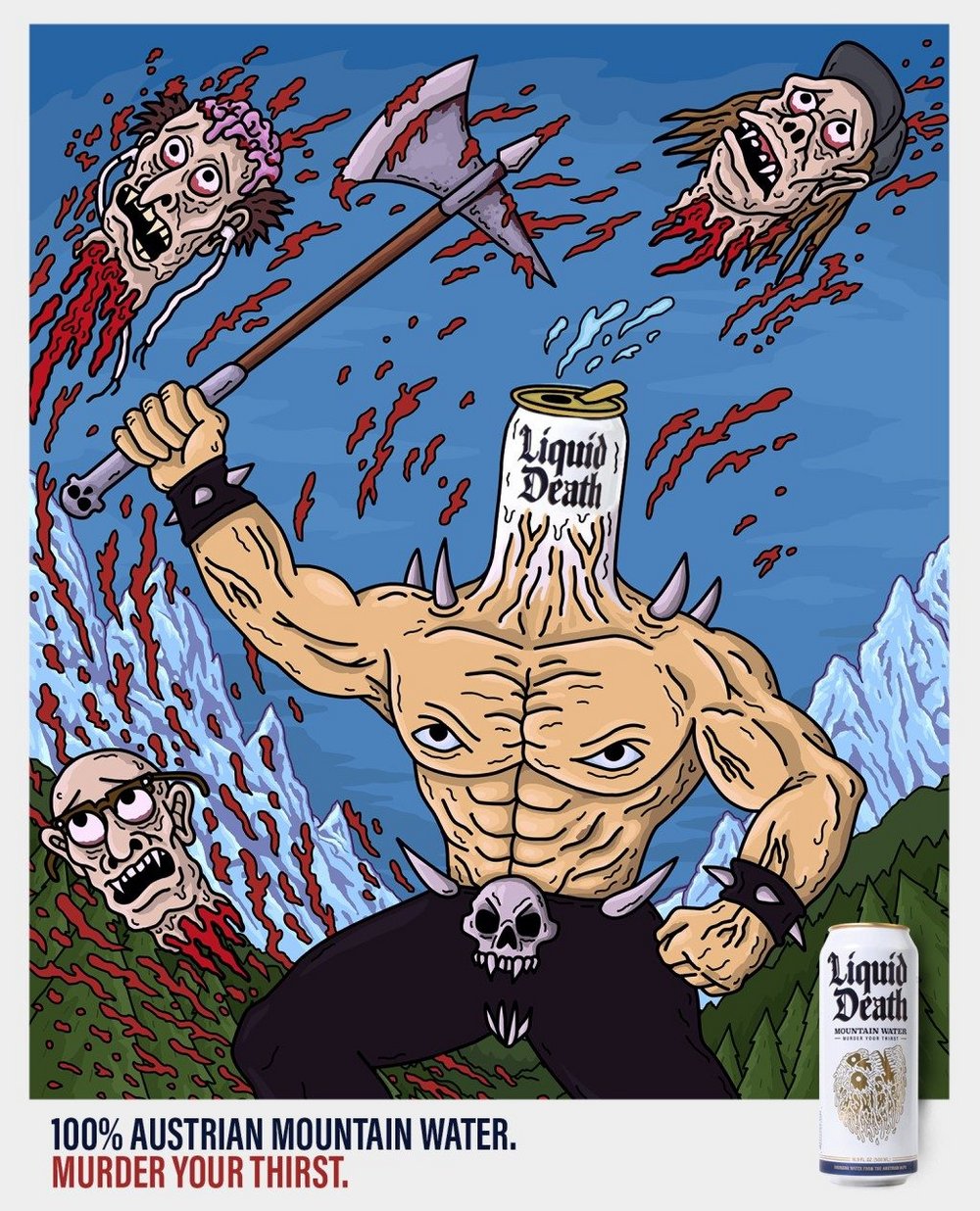
Straight to the source
During his 10 years working as a creative in the ad industry, Cessario discovered that the kind of fun, irreverent marketing typical of unhealthy brands made health-focused FMCG brands nervous – with Cessario’s often crazier disruptive pitch ideas being shot down. ‘Why does health food always have to be so quiet and responsible?’ laments Cessario. ‘How come all of this shit that’s terrible for you is allowed to have all the fun and explosions?’
However, Cessario knew from experience that this type of humorous and entertaining marketing would fit just as well with wholesome products, seeing it work first hand while working at Humanaut, Chattanooga in 2015. Pushing a protein shake for health brand Organic Valley, the agency’s public safety announcement styled campaign made tongue-in-cheek references to bro culture and encouraged people to ensure musclebound guys were drinking healthy high calorie shakes to Save The Bros. The ad increased sales by 114% in the month following the campaign’s launch.
Despite this success, few health brands were adopting this type of advertising. Dissatisfied with this status quo, in 2017 Cessario started his own health brand styled after the heavy metal scene of his youth, and focused on creating advertising that was fun and engaging. The decision to sell water was purely down to it being a product vertical that is entirely driven by the brand and its marketing, perfect for disruption.
Water, water, everywhere
Cessario’s first obstacle in getting Liquid Death off the ground were the high entry costs into the water category. The minimum number of cans that a manufacturer required for printing was 250,000, at a cost of $200,000 – funds that he didn’t have.
Finding investors was difficult, especially considering that the product’s branding was so unconventional. ‘If I were to pitch this idea: “I want to put water in tallboy cans that look like beer and call it Liquid Death” to a focus group they would no doubt say, “I’d never buy that.” Or, “That’s confusing.” Even, “I’d never give that to my kids,”’ says Cessario.
To prove that Liquid Death was a viable product, Cessario created a commercial and posted it online under the guise of it already being on the market.
The Deadliest Stuff On Earth spot features an actress pouring Liquid Death out of a can while arguing that water brands have been deceiving the public into thinking water is ‘some girly drink for yoga moms’ when actually it is responsible for thousands of deaths a year. The ad ends with the camera panning out to reveal a man strapped to a table who has been waterboarded throughout.
Made for just $1,500 and supported by a further $3,500 in paid media, the ad amassed 3 million views over four months and helped Liquid Death accumulate 80,000 Facebook followers.
The company also received a barrage of messages from smaller retailers asking how they could get hold of the product. It all helped Liquid Death procure enough investment for a run of a quarter of a million cans – with the first can sold online in January 2019.
Entertain or die
With a physical product in hand, the next step was to start building the brand with a marketing strategy. Cessario’s jumping off point was to question the common tropes in water advertising. Water brands regularly focus on the importance of hydrating, but, says Cessario, ‘If I asked 10 random people why they should drink water, every single one of them would say, “Because I have to hydrate.” So why would you need to spend millions of dollars on telling people something they already know?’
Rather than convince people to drink water, Liquid Death’s goal was make its water seem cool and exciting by using fun branded content. ‘Why would you want to follow a fucking water brand that just posts photos of their bottles all day?’ says Cessario. ‘If we create actual entertainment and not try to just sell, sell, sell, it will naturally create that fandom for Liquid Death that you can’t even buy with money.’
This strategy led Liquid Death to create its very own slasher movie earlier this year, Dead Till Death. The 45-minute film features a group of friends who eat magic mushrooms on a camping trip and then get hunted by cans of Liquid Death. Cessario says that the novelty of the idea helped the brand get ‘millions of dollars’ of free exposure. He notes that given that brands ‘day trade’ in attention, this kind of earned media is vital for Liquid Death, with sharp spikes in awareness from the PR of a killer ad converting into sales.
Dead Till Death was also available for $2.99 on Amazon Prime, which helped the brand recoup the costs of the film production. This tactic of combining a creative marketing idea with a product that can be monetised is something the brand has replicated on several occasions. For instance, it partnered with director Zack Snyder to sell No Brainer zombie repellent headgear ($29.99) for the release of the Netflix-produced Army of the Dead. This campaign was released as an infomercial and has the highest view through rate of all Liquid Death’s videos – with 6.23% of people who were served the pre-roll ad viewing all 28 minutes.
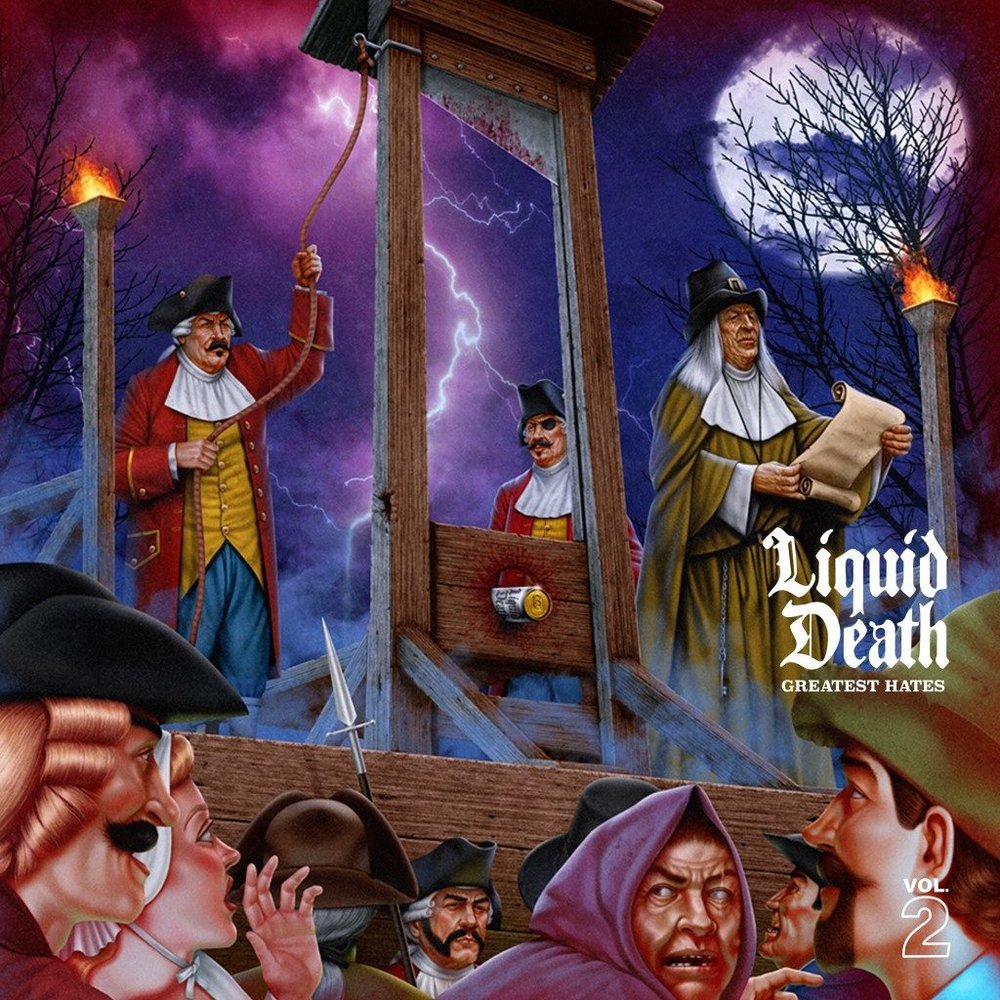
Liquid Death even sells a series of music albums called Greatest Hates that turn comments of online detractors (eg, ‘Fire your marketing guy’) into metal songs. Monetising its marketing helps Liquid Death compete with the giant brands that have budgets that are 100 times larger, says Cessario.
Flipped for real
It’s not just throwaway merch either. In August this year, the brand’s online store offered up 100 limited-edition skateboard decks priced at $500. Infused with the blood of Tony Hawk (legendary skateboarder and Liquid Death investor), the Hawk Blood Deck boards sold out in just 20 minutes.
Liquid Death also seized on the opportunity to develop a branded content strategy on the fly when Lil Nas X commented on the news via Twitter. In March, the American rapper had dabbled in the red stuff himself with a run of unauthorised Nike Satan Shoes, which allegedly contained a drop of his blood, and sparked accusations of devil worship and legal action in the process. He was suitably annoyed that Hawk’s skateboards didn’t suffer the same outrage and when a flip comment on an Instagram post about the boards – ‘Nah he tweakin’ – went viral, so did the Blood Deck campaign.
The brand quickly orchestrated a meeting between Hawk and the rapper to quash any ill will – the TikTok video of Hawk stunt doubling for Lil Nas X at a skate park notched up over 3 million views. This transformed the initial PR idea into a piece of branded entertainment, while helping Liquid Death to extend the story in the news cycle and generate further earned media for the brand.
Cessario notes: ‘We want to be one of the best things that consumers see that day because we have to compete with hilarious influencers, fitness athletes and movie trailers. The bar to earn someone’s attention is really high now.’ Which is why creating branded entertainment is important to help Liquid Death cut through that noise and earn engagement. This strategy is what has led to Liquid Death being the most followed water brand on TikTok and Instagram, where its following has rocketed 667% in the 10 months since the start of 2021, and is four times that of Evian.

Death to plastic
The brand goes beyond gore and goofs too. Proceeds from the Blood Deck Boards are going to a charitable organisation that builds skateparks, and also to anti-plastic pollution charity 5Gyres. Liquid Death donates 10% of the profits from every can of Liquid Death towards killing plastic pollution, a strategic choice that helps to position its aluminium cans as a better consumption choice over the plastic water bottles of competitors – only 10% of the world’s plastic has ever been recycled, whereas 75% of all the aluminium produced since 1888 is still in circulation, offering a much better packaging solution.
Liquid Death uses this environmental superiority as a marketing tactic under the creative platform Death to Plastic. Under this altruistic springboard, the brand launched Loving Homes For Plastic in April, a punk rock way to help people make a point about packaging. The brand sent out prepaid USPS stamps with orders of 12-can cases (in conjunction with a promotional code), urging people to post their plastic bottles directly back to the big companies responsible for them in the first place, such as Coca-Cola and Pepsi. (‘Just don’t be a jerk and throw dirty garbage in the mail. Clean and empty the bottle first,’ the website warns.)
Other campaigns in Death to Plastic have been more awareness focused, such as 2020’s Cutie Polluties. The plush toy range featured sea animals with graphic injuries caused by ocean plastic, and at $75 a pop the cuddly critters made a familiar point in a suitably unruly way.
A great example of what happens when Liquid Death’s edgy marketing, environmental sustainability and branded entertainment collide occurred in October 2021. The brand partnered with Amazon Prime’s The Boys, ‘firing’ the TV show’s Aquaman-esque superhero The Deep as its sustainability associate for burning ocean plastic and spreading the toxic fumes in front of children. The violently funny series proved a perfect match for the brand’s tone of voice and focus on ‘entertainment’ over selling.
Moving the needle
Liquid Death has achieved remarkable success in short order by marching to its own particular (metal) beat. Just last month, Cessario got a tattoo of a Liquid Death fan who had documented himself chugging a can every day for a year on TikTok – reflecting the same commitment to the cause as fans with Liquid Death tattoos of their own (120 and counting). Would you catch the heads at Dasani, Aquafina or Evian doing anything remotely similar?
But emulating the punky upstart isn’t something we’ll see any time soon, says Cessario. ‘I wouldn’t be surprised if the mainstream water brands continue to view Liquid Death as a come-and-go thing,’ he says. ‘But we’ll keep climbing and climbing until the point where they eventually realise we are a real force to be reckoned with.’
This death threat should be taken seriously by all brands operating in a category where branding provides the competitive advantage. Don’t drown in the sea of sameness…

